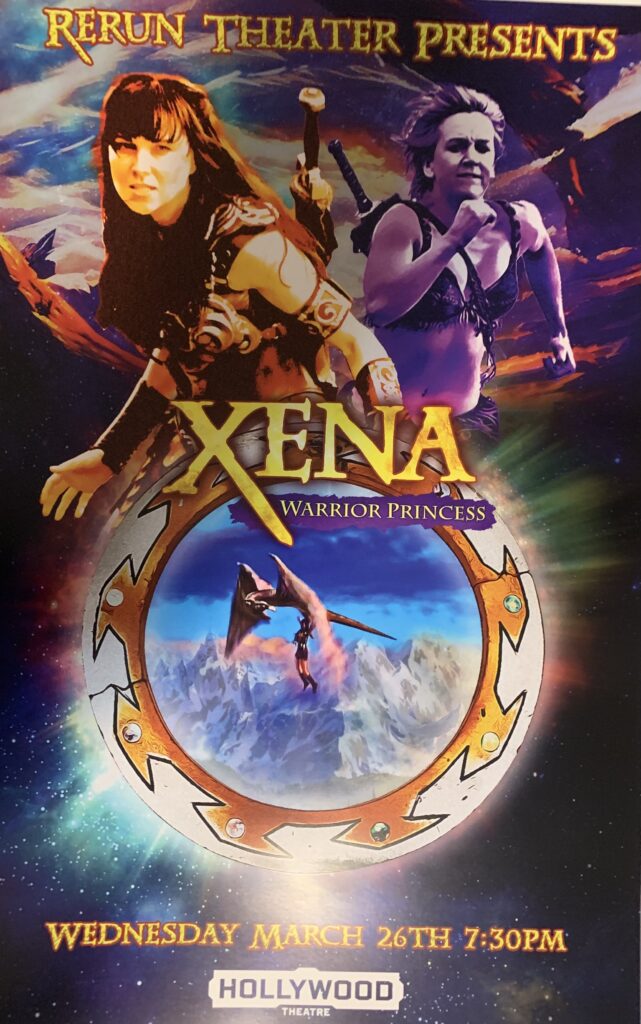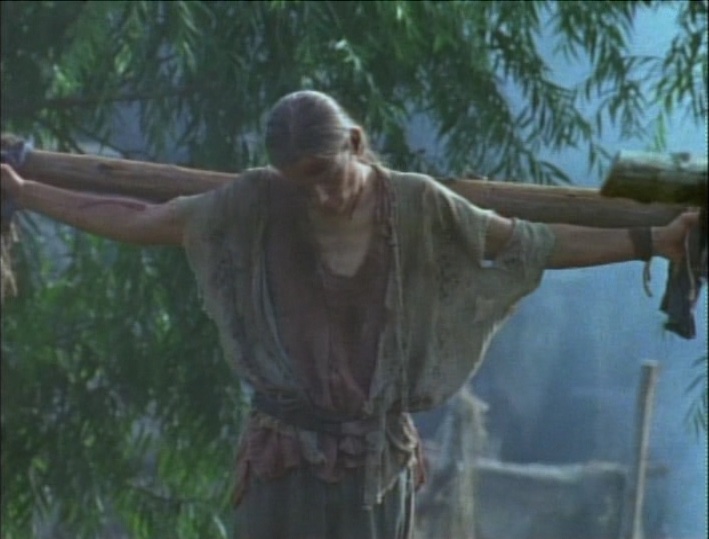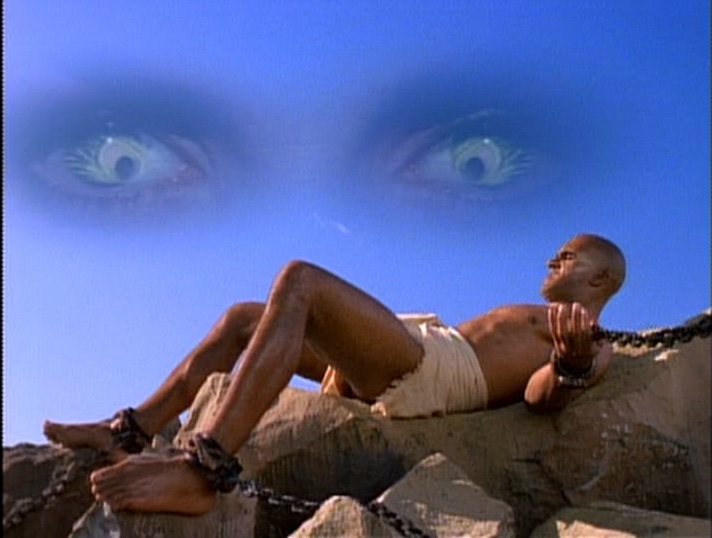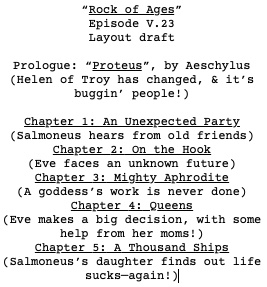I finally watched the Bob Dylan biopic A Complete Unknown, and it’s interesting to see the clash of artists during this formative period in rock music.
The movie opens with Dylan arriving in Greenwich village, and a montage of him walking the streets with a guitar strapped to his back looking every bit like the icon we now know, but in reality, he’s totally unremarkable, wandering a bleak cityscape. He passes by a bum begging for change who also plays a guitar, no doubt a musical predecessor who also had big dreams. He stops in a bar full of other musicians who barely give him a second glance until he asks where Woody Guthrie can be found. So, guitar+Guthrie: they get who he is, and dismiss him with some curt directions.
Dylan’s acoustic guitar is his ticket to see his idol, and gain an audience with Pete Seeger. Dylan’s mastery of folk tropes gains him respect of the old guard, who recognize the future of their art form when they hear it. Dylan seems to exude authenticity in an art form that demands it, though he says, and does, very little when he’s not singing.
Pete Seeger demonstrates the magical artistry of folk music when he leads an untrained audience in a beautiful & haunting rendition of one of his songs, and the real magic of folk, of course, is how it raises social awareness & helps organize political movements. Art makes social responsibility beautiful.
Dylan gets this, and feels the power that moves his audience. His songs capture his generation’s feelings with cutting force, and the folk industry see another movement leader arising in their midst.
But something happens to his music as he develops his craft. He draws upon more than just folk tropes and news events, but from Shakespeare, the Bible, and cinema, in a way that becomes, like those art forms, more about the timeless personal journey of the artist.
Dylan’s actual journey as an artist is a closed book: literally. He carries a scrapbook of his earlier years which contradicts his story that he’s a colorful drifter. His bio and his name are fabrications. Yet the feeling he conveys in his music seems genuine. His fictions are convincing, but what happens if he tries to break free of them?
Once he’s a breakout hit, he can’t go anywhere without being mobbed. It’s difficult to be a spiritual leader of a movement if you’re chased down by the people when you’re trying to live your life. Dylan is without his guitar in these scenes, and without it, he seems to shrink to nothing; only the crowds define him.
His success is derived from his well-chosen imagery, beginning with that acoustic guitar, but it comes crashing down when he reaches for a different guitar. The music he sings to electric accompaniment, “Maggie’s Farm” and “Like a Rolling Stone”, are powerful ballads, but they’re not folk ballads. We can see what frustration powers them: being forced to serve another’s agenda, and being cast out if you try to reclaim your freedom are exactly what happened to him.
To be sure, these are themes just as universal as the subjects of folk music, but they express the frustration of the individual, on the individual’s own terms. You’ll never get an audience to chant these songs in unison, because they’re introspective, not unifying.
That said, had Dylan started out writing this kind of music, how far would he have gotten? Who would publish it? Perhaps folk music provided a good launching point for his themes, but he was never destined to stay there, to the chagrin of his original sponsors. My first album of his I bought was as a member of the fictional, whimsical Traveling Wilburys, which seemed to suit his style as well as anything else he’s done, a role to slip in and out of, its truth in the moment of performance, in a band that seems to have been everywhere, but gathers no moss.
Xena in Hollywood
The last time I watched Xena Warrior Princess with commercial breaks was June 18th, 2001. Since then, fans have waited to see a new chapter of her story on the big screen, or at least, to see her existing stories replayed on the big screen, but in the 24 years since that last aired episode, I’ve never seen that actually happen…until just this last week! Two episodes of Xena were shown at the Hollywood Theatre in Portland, Oregon, with commercial breaks, using ads from the 1990s, when they first aired.
One might ask why bother doing that when you can watch them ad-free in the comfort of your own home, but having now gone through the process, it’s a whole different experience seeing them with an enthusiastic audience, plus, having to wait for 2 minutes of commercials before you can see a cliffhanger resolved restores the original pacing of the show, giving you some extra time to absorb what you’ve seen, and to prepare for the next plot twist. Hearing the audience pick up on every little detail means you get a much fuller appreciation for the story: a lot more of the show’s humor emerges, and the dramatic moments hit a little harder. This is true of any theatrical release, but we’re not used to that in a (non-sports) tv show, unless we’re watching with friends or family. TV in its earlier days was much more communal, with only one tv set in the house, and fewer channels to choose from. Much of my experience watching Xena was solitary, though I spent many hours discussing it after the fact in online forums, which were just emerging when the show first started airing, in 1995.
So it was a very different experience this last weekend to sit in a crowded theater sharing these episodes for the first time with others. They were presented by Rerun Theater, a group that collects vintage tv episodes, matches them with era-appropriate commercials, introduces them to the audience beforehand, and offers a commemorative poster for each showing. It’s a poignant experience to compare the image of women in the commercials with the non-traditional ground-breaking characters in Xena, providing a cultural snapshot of the show’s context, and how the show would eventually make its own impact on the culture. You could hear the audience snicker or gasp as each commercial came on, and there was a lot of conversation to be overheard as we all left the theater.
For myself, having waited 24 years to see Xena on the big screen, I asked myself beforehand why these two particular episodes were chosen. I wondered why they didn’t choose the pilot instead, or one of the more cinematic two-part episodes later on that more closely resembled the kind of martial arts films that Hollywood Theatre often showcased. Having now seen them back to back, I think they were a good choice, especially for first-time viewers, because they provide a lot of exposition, and help give a taste of what we’ll see in the coming seasons.
Callisto, (Season 1, episode 22):
Callisto opens with a scene familiar to Xena’s past life, a village being ransacked by warlords, led by a woman calling herself Xena. We later discover this person is actually Callisto, a former survivor of one of her raids, and is now carrying on Xena’s crimes in her name, daring her to stop her. It sounds psychotic, but it’s the closest thing to justice that Callisto can imagine, given that the alternative is letting Xena find redemption in good deeds and making amends, while her own life has been forever scarred. Callisto had her parents taken away from her by Xena, and no doubt sought the safety of other warlords who could teach her their ways. If there is no justice, then the next best thing is to learn to use Xena’s own force against her, and that means using her tactics. There’s no future in her strategy, but she doesn’t believe in the future anyway, outside of Xena, the all-powerful force in her life, to whom she’s drawn like a soulmate. It’s as if she feels Xena is the only one who can understand her, and so she has remade herself in Xena’s image.
This is demonstrated at their first encounter, when Callisto becomes one of the few who can successfully catch Xena’s signature weapon, the chakram, and carry it as her own. The chakram seems to be a weapon powered by the will, and certainly, Callisto’s will for destruction matches Xena’s when she first received the weapon as Ares’ student, many years before.
It’s interesting to see that Callisto’s preferred method of torment is to crucify villagers, something that her reincarnated self, Livia, will do 25 years later, in season five. Callisto seeks satisfaction in an act of mutual destruction with Xena, after which, she craves only oblivion in death. As we’ll see, seasons later, she never finds it. It takes two lifetimes to finally achieve some kind of lasting peace, after which she truly does become soulmates with Xena, when she is reborn as her child.
Callisto aired near the end of season one, as the writing staff was preparing season 2, in which the show would begin to develop its character arcs, and introduce elements that would dominate the rest of the series. The show’s seemingly casual episodic approach pretty much ends with Callisto, and her story would be woven through the others in one form or another until very near the series’ end.
Prometheus (Season 1, episode 8):
The next episode, Prometheus, was aired much earlier in season one, #8, just a few episodes before the pivotal Hooves and Harlots episode, in which Gabrielle’s first great story arc begins, as heir to the Amazon throne, an arc which will last about as long as Callisto’s, through nearly the end of season six. Soon, Gabrielle will learn to wield a weapon, but in Prometheus, she’s starting to feel like a fifth wheel from her lack of fighting skills. During one battle scene, she just cringes by the wall as the rest of them fight. By the time Callisto comes around, she’s able to handily beat up Joxer, who prides himself as a great warrior. So this episode sets up her dissatisfaction as Xena’s comedy relief, and is no longer content to just be Xena’s chronicler, but her genuine sidekick and pupil. Xena still sees her as a bard and chronicler, however, and the first hint of a story arc is given when Xena makes it clear she needs to plan for the future by attending the Athens Academy of Performing Bards, something Gabrielle will do later this season.
This episode is one of only two with guest-star Hercules, from Xena’s parent show, Hercules: The Legendary Journeys. Xena began on that show, and now in its eighth episode, it once again is pulling viewers from HTLJ to take a second look at Xena, to see how it’s coming along, and it’s just in time for Gabrielle to indicate she’s ready to step up, learning a few lessons from Hercules’ sidekick, Iolaus himself. To capture these new viewers, both couples seem to pair up romantically, and Gabrielle brings up the subject of soulmates, with Iolaus. Clearly, she hasn’t been around him long enough to have such feelings, but given her youth, the intensity of their adventure, with lives at stake, and Xena’s emotional reunion with Hercules, the man who restored her faith in heroism and forgiveness, and it’s understandable that strong feelings would take over—and just as quickly dissipate. For the Hercules viewers, though, it’s a signal that they’d better keep an eye on things over on Xena’s show, because these gals are obviously going to be relevant in their lives, especially if they’re hinting about becoming soulmates!
Savvy viewers would know better than take this at face value, since anyone who dates any of these folks are doomed to become redshirts, but there’s no doubt the audience understands how these tropes work: once Hercules viewers get hooked on Xena, they’ll watch for their own reasons, and there’s no better way to establish one’s hero bonafides than to have them on an equal relationship footing with another hero. Instantly, Gabrielle is elevated to Iolaus’s status as action hero after she connects with him about it, even though she has yet to actually fight, and it won’t be long before she assumes the role in her own right. We’ll see this later on in season five, when daughter Livia manages to reach Xena’s level of accomplishment as a warlord, and then later, as a powerful force for peace, something we learn later Xena will accomplish in her next life.
There’s a bit of a reprisal of Xena’s first guest-shot on The Warrior Princess, when we see Hercules and Xena at odds over who gets to wield the sword that can free Prometheus. We eventually learn that releasing Prometheus is a death sentence for the wielder of the sword, and they are fighting for the chance to conduct a suicide mission, something they didn’t want to tell their sidekicks for fear they would want to talk them out of it. Here we also see a bit of foreshadowing of the questions in Xena’s final episode, in which Xena again has a secret agenda about her own possible sacrifice.
The title character, Prometheus, is a giant chained to a mountainside, and doesn’t really interact with the main characters. He speaks only with Hera, at the beginning, but there’s possibly some interesting subtext in how he’s presented. He’s not dressed like the usual Xena demigod, nor does he resemble any of the brutish giants we’ve seen. He’s bald, and wears only a brief white garment about his waist. If you’re familiar with classic science fiction movies, you’ll recognize this look: the title character in The Amazing Colossal Man.
It’s a story about a Lt Colonel who survives a plutonium explosion during the nuclear tests of the 1950s, causing him to grow indefinitely, driving him mad in the process. It can be a metaphor for the atom bomb’s power in the arms race. Here, Prometheus is being punished for giving mankind too much power in the form of fire, and healing, and certainly, atomic energy is a similarly godlike form of power. References to nuclear energy, and its ties to Oppenheimer’s quote from the Bhagavad Gita occur in various forms throughout Xena, and we’ll see more explicit forms of this metaphor repeated in season 6, in Send in the Clones (featuring the ominously named Alexis Los Alamos), and in the series finale, in which Xena seems to ignite an ancient form of the atom bomb in the ultimate battle against the armies of the demonic Eater of Souls.
These initial episodes are a good introduction to some of the character arcs and motifs that will be developed to great effect in future seasons. Some of them are quite heavy and profound, but they are quietly introduced and seem to grow organically before our eyes without ever weighing down the show with important messages, but never abandoning the universal concerns that the original myths illustrated with a similar effortless economy and light touch.
Say Yes to the Dress
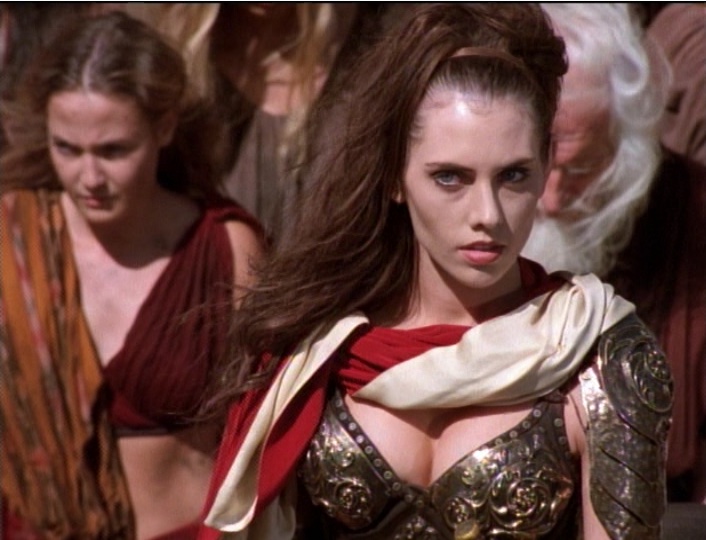
While watching “Livia”, I noticed something new: when she’s presenting captured Elijians as slaves to the Emperor, one gal right behind her is wearing virtually the same outfit she will as Eve!
That background actor was standing farther away in the establishing shot, but for this close up, they moved her right beside her.
I don’t know if they’d already designed Eve’s costume yet, 2 eps prior, but clearly they were thinking of the latest in Elijian fashion!
Amazons and Cannibals and Kids, Oh My!
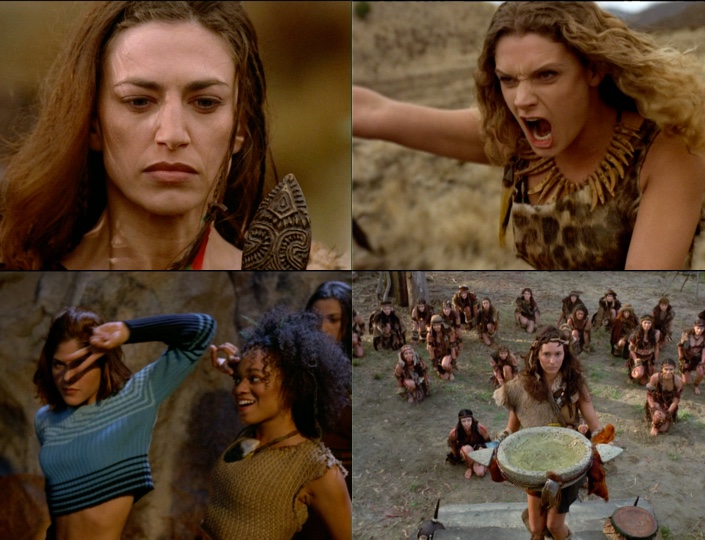
Top left to bottom right: Karina (Claudia Black), Samsara (Danielle Cormack), Cyane (Selma Blair), Olan (Monica McSwain), Eve’s Rite of Caste ceremony, in Lifeblood, Xena Warrior Princess.
Rewatching season 5’s Xena episode, Lifeblood, I noticed a few things for the first time that were impossible to realize before, when it first aired. This was an awkward episode, using an unrelated series pilot, Amazon High, in flashbacks for this story about the Northern Amazons, and Eve’s Rite of Caste ceremony. It seemed a story filled with elements that didn’t quite fit together, and seemed to rewrite the literal rules of shamanism that the tribe was associated with. That, and the odd tonal juxtaposition between the tragic backstory of these Amazons, and the pilot, a fish-out-of-water comedy set in the prehistoric age.
That said, this time around I didn’t worry about any of that, and just took in the images, and the themes, and it suddenly made more sense. What brings it all together, in my mind, is Eve’s presence. Her potential baptism by blood, exactly what Xena wishes to avoid for her, is eventually reimagined as a baptism by water blessed by the tribe. This actually makes perfect sense, given what we eventually learn about Eve’s fate: as her parents lie frozen, she will indeed be baptized by blood, and redeemed in a ceremony by the Baptist, made possible by a vision not unlike the vision Xena sees with the aid of the tribe’s Atma dagger, a glimpse into the original purity of one’s origin.
Since we have no idea any of this will happen, the first time we watch Lifeblood, we merely consider Eve the MacGuffin of this story, and the real story is Yakut unable to cross over into the next life because of the Amazons’ embrace of vengeance and bloodlust. The tonal shift of her somber concern with the antics of the flashbacks shake our confidence in the story’s unity and message, but if we can look past that, there’s actually a lot of underlying unity.
One of the big influences on both Hercules The Legendary Journeys and Xena Warrior Princess, according to Rob Tapert, was Michael Crichton’s book, Eaters of the Dead (later made into a movie, The Thirteenth Warrior). Based on the true account of a diplomate from an advanced civilization of the 10th century, the Abbasid Caliph, sent to Viking territory to understand their ways. His written account gives us a glimpse of the Viking world which seemed quite savage to him. Crichton adds a fantasy element to this story: The diplomat arrives just as the Vikings are encountering an even more ancient and savage race. They’re a separate branch of the human species altogether: a matriarchal tribe of cannibalistic Neanderthals, with whom no diplomacy is possible. Their ways and their motives are completely alien to the Vikings and the Caliphate diplomat, and it’s made clear that their violent confrontation with will be memorialized in much more familiar terms: as dragons and goblins in the legend of Beowulf.
Amazon High includes these elements as well. The enemies of the Amazons are much like these Neanderthals, and on the occasion when they speak English, we’re almost taken aback, given their animalistic savagery. They’re cannibals as well, having eaten all the men in the heroes’ tribe. The Amazons’ last surviving man is much like the shamans we’ll see later, and holds the secret for summoning a hero from the future. This hero, Cyane, is befriended by Olan, a gal who has the gift for talking to animals, another key shamanistic trait. In fact, her name, “Olan”, is a Siberian Yakut word for shaman (it means literally “arctic hysteria”), which indicates that the show’s research into Siberian shamanism was well underway at this point. Since shamanism also has a Viking connection, in the form of berserkers who became like bears, we see how Eaters of the Dead has possibly influenced this episode as well.
Olan is played by Monica McSwain, by the way, who is the best dancer the Amazons will ever have in any of these episodes! No surprise, since she is a professional dancer and choreographer. There’s good chemistry between her and Cyane (Selma Blair), and in the final celebration dance, we see Cyane introducing dance moves from Pulp Fiction and other 20th century sources, while Olan translates them into much more florid and expressive Amazonian movements. It’s unfortunate we never get to see more of them in a series.
The leader of these ancient Amazons, Karina (Claudia Black), is a visionary of another type, able to transform the surviving members of her tribe into what I assume would be the leading power of their day. Samsara (Danielle Cormack), embodies the fury of the Amazons that we will recognize in later years in characters such as Varia, whom Eve will have to contend with. These are the two archetypes that help shape the depiction of the Amazons on these shows, and one could argue that without Karina’s visionary leadership, the Amazons remain what they are in Lifeblood: a Paleolithic tribe cut off from the rest of humanity, an isolation that might possibly end in season 6, when Eve makes her last appearance in Path of Vengeance.
We see this Eaters of the Dead pattern throughout HTLJ and XWP, into its final season, in the episode The Abyss (which was also originally supposed to include Eve, interestingly enough), a story about a savage race of cannibals seemingly incapable of any kind of speech. Eve herself plays the diplomat between the advanced civilization of Rome, and the Paleolithic Amazons, in Path of Vengeance, as a way to bring them out of their endangered state of isolation. Her mission is interrupted when her bloody past renders her an ineffective messenger of peace. No doubt this leads to her decision to head to India and Ch’in.
When the Amazon High pilot was shelved, it took new form as the bold opener for season 4 of XWP, Adventures in the Sin Trade. The bleak landscapes and gloomy cave settings for Amazon High return, only this time filmed in the epic tones we’d see in The Debt. There are no adults in this tribe: like the men in Lifeblood, the adults have all been killed. Cyane as reluctant leader now takes the form of Otere, and Olan with the Yakut-inspired name is now literally named Yakut! The tribe is hunted by Alti, a shamaness, who summons a berserker, a figure appearing in Norse religious practices. This new incarnation of Amazon High, amongst the Northern Siberians, pops up here and there over three seasons of Xena, finally appearing in To Helicon and Back, when the confrontation that would’ve likely occurred between Karina and Samsara is now fulfilled by Gabrielle and Varia.
No idea goes wasted in the world of Xena and Hercules, however, so I believe we do eventually see Amazon High go to series in the form of Cleopatra 2525. The world of caves and sparsely populated surfaces of roaming saber-tooth tigers, horses and mammoths in prehistoric times are now a dystopian future, with steel caves and Baileys, floating mammoth robots who are just as alien and incommunicative as the Neanderthals in Eaters of the Dead. This time the adults of Amazon High reappear: Karina is now Hel (a name from Norse myth), and Samsara is Sarge. The Atma dagger is Voice, which only Hel can hear, making her a kind of futuristic shaman. Cyane is Cleopatra, of course, from the past now, not the future, but still full of 20th century anachronisms. The villain wears garish makeup, a bit like some of the men of Amazon High, and it’s even hinted at the end that he may be a time traveler, too, which is a plot point that we may eventually have seen on Amazon High. We can see another connection to Amazon High in the title of its pilot: Quest for Fire Power, is a play off of the film about humanity’s first use of fire in the Paleolithic age, Quest for Fire.
These are things I keep in mind as I work through my own Eve-related project, because I think there’s unfinished business between Eve and the Amazons that doesn’t get fully explored, since they likely held them over to develop for an Eve series, which, like Amazon High, did not get off the ground, unfortunately. But to me, there’s a lot of instances on the show, like Amazon High, that are ideas that manifest themselves here and there, and help inspire stories, but don’t necessarily get fully realized, and it’s those ideas these days that intrigue me the most these days.
Work in Progress Update
I have finished the full script, incorporating all notes and feedback, and I’m very confidant, going forward. Here’s what I’m working on for the month of March, 2024: the prologue for my Xena-related webcomic, and layouts for the first 5 chapters of the main story. I’ve included working chapter titles and a brief description of its contents. I’ll publish any images that look intriguing as I go through it:
Xena Virtual Season & Multiple Viewpoints
One of the helpful things about working on the Xena Virtual Season was getting feedback from people different than me, which is helpful if you want to appeal to a larger audience. In my case, a cis het male, it’s essential when writing for Xena. Was this exposure enough? No. It’s never enough in an ever-changing world. I made sure I got such feedback on my current project as well. This is why I supported larger writer rooms for SAG negotiations: a single writer can do a lot, but in a popular medium like television it’s impossible for one person to do it all without diverse input.
Xena Virtual Season 8
My time on the Xena Virtual Season 7 was an inspiring one. Though I did not write any stand -alone eps, I brainstormed a lot of episode ideas. I had enough to nearly fill an entire season. My own favorite, slated for season 8, was an arc involving Eve & the Elijian church. It was to culminate in a musical comedy set in Antioch, vs the Roman army. It was beyond my skill to write it, at the time, however. There was still much I needed to learn about the show, & with the series release on dvd scheduled the following year, 2003, I’d soon have the opportunity to catch up & see what I missed.
Xena Virtual Season 7: War Cries 4
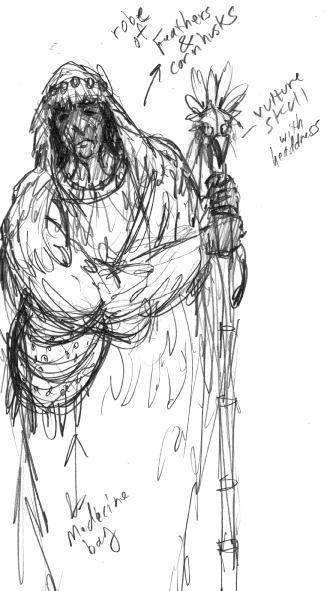
SHAMAN: Where are you going, my warrior?
GAB: I am going to the Great Jungle.
SHAMAN: I shall await you, weeping.
GAB: I shall await you, mourning.
Devising this ritual was good practice for me in my current project, in which I had to visualize what sort of rituals the Elijians would evolve 25 years after Eli’s death.
Xena Virtual Season 7: War Cries 3
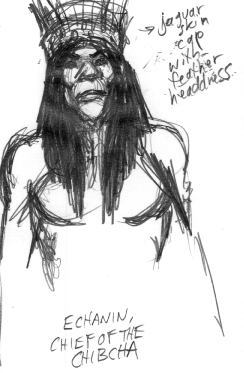
Xena Virtual Season 7: War Cries 2
The final ep of the Xena Virtual Season, War Cries, was the only one I wrote for: the script was powerful, but the ending needed altering to match the 1st ep of season 8. Since season 7 began with a ritual (to bring Xena back), it made sense to end it with a ritual. I had done a lot of research into South America’s Amazon tribes, & took a shot at depicting how the ancient Chibcha might have resolved Gab’s spiritual dilemma of killing an innocent man. I mention before using Shakira for inspiration, but for this episode, I listened to the elegiac soundtrack to The Mission by Ennio Morricone, which uses the same panpipe sound to tell a story of loss & redemption, also set in historical South America.
